penguin149 wrote:
Found a leak around my outside kitchen compartment door. Planning to remove the door, check for any damage and reinstall the door. Should I use putty tape or butyl tape around the door frame and TT side? Thinking the putty tape would compress and spread, allowing me to trim the part that oozes out. Butyl tape is stickier but wouldn’t squish like the putty tape. Can’t decide which is better?!
Hi,
I have some info that may help you make a decision. I have dealt with a great number of putty tape failures, I restore older campers in the 10 to 15 year range so far. I'm now on my 15th camper rot repair so I have seen first hand the damage from failed putty tape. Siding leaks can be as bad, and in many some cases, worse then roof leaks as there are so many holes in the siding.
This is what a putty tape failure looks like. This was a 13 year old camper at the time of the pics. This is a front window but cargo doors, corner moldings, entry doors or any siding leak failure looks the same when putty tape gets older. It did not take 13 years to get to the stage, the leak started years before.
Putty tape is easy to trim, that is a fact. They alter the sealing compound to make it trim easier on purpose, the side effect is less performance over time.
What you are seeing in these pics is when the putty tape shrinks. And it does shrink, and the UV from the sun accelerates it. When the tape shrinks, it will split in the middle or pull away/separate from the siding or the cargo door flange etc. That starts a leak path. Slowly over time the leak path keeps getting bigger, you can see the water and dirt staining in the putty tape. The tape lifted that is how the dirt was driven into the joint. When the leak path gets long enough, water enters the wall cavities and it is down hill from there.

Close ups
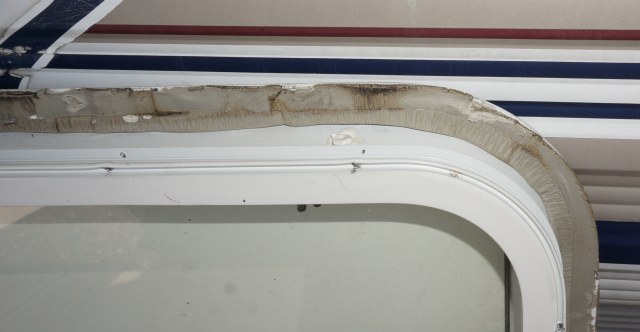

Here is a slide flange removed on a 6 year old camper where the same putty tape failure had started. You can see how the putty tape tears apart when you remove the flange. I caught this leak path just in time before it leaked inside.
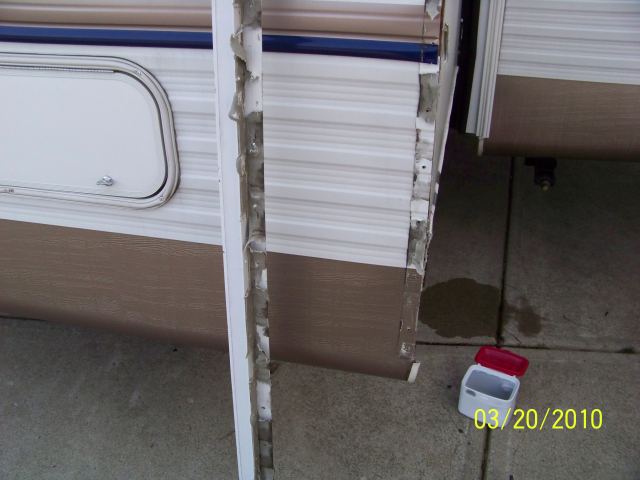

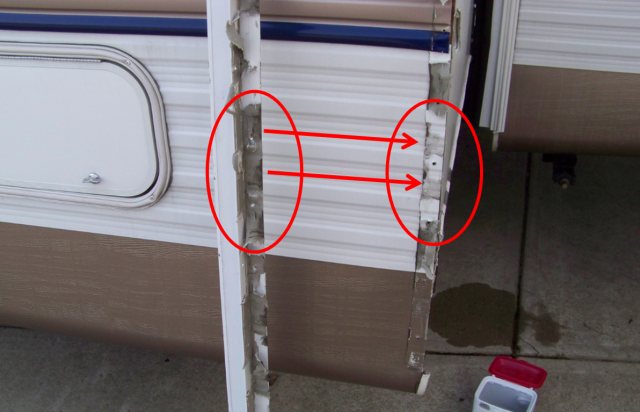
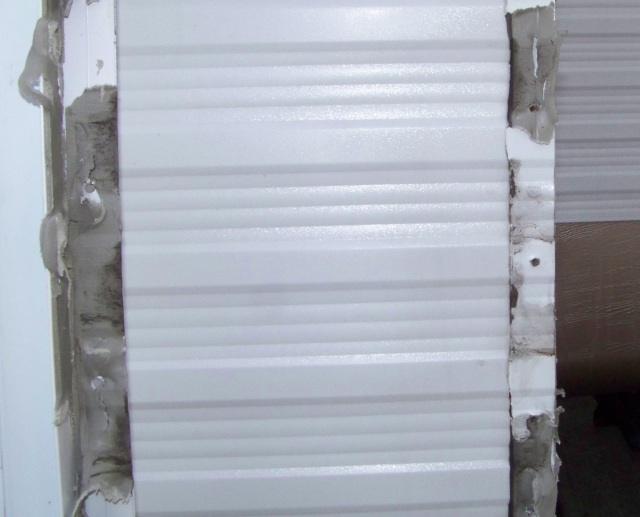
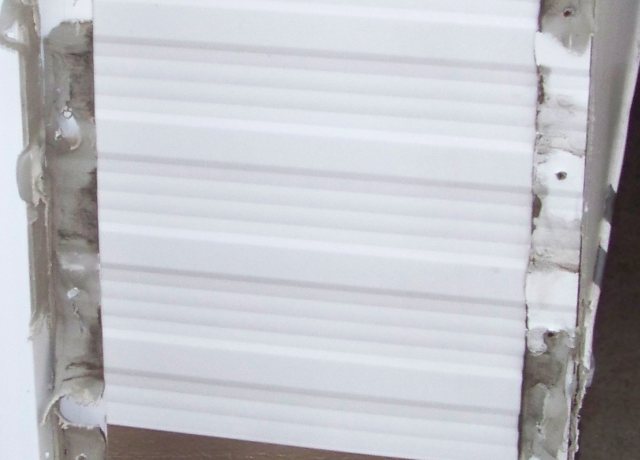
Commercial steel building butyl tape is different then putty tape. When you are putting up a million dollar building you do not want leaks in 3 to 5 years like can happen on putty tape. You want 20 year plus quality sealing tape.
I use the GSSI brand, MB-10A part number for their butyl tape. I buy it here. $6.50 a 50 ft roll. for 1/8" thick 1" wide
https://www.bestmaterials.com/detail.aspx?ID=19987I buy it by the case and I go through 3 to 4 cases a year. The case size is cheaper and I have higher odds of it being shipped and not damaged. If you do not want to order it online, then find a building/roof supply place in your area and ask them for their best butyl sealing tape.
I have learned how to trim the butyl, it's not hard to do, but there is a learning curve. Temperature plays a big role in the learning. Too much heat, it is bubble gum, to little and it is harder to trim. A heat gun is your friend, both in removing the old putty tape flange seal and putting new butyl down. Keep the heat gun moving, do not stand still with it. Pending the outside temps will guide you as to use a lot of heat or not much.
In the winter months, my shop is 55F and I need to warm the molding and the butyl to flow on purpose as I tighten the screws, Here is a corner molding. On metal corrugated siding I add extra butyl strips in the valleys of the siding and I fully line the molding. As I tighten the screws, the butyl will ozz and I want it to flow everywhere in that corner.

To trim, I use plastic scrapers from Harbor freight to not scratch the siding. I get the right temp and I can push the scraper right up the joint and trim. I add a little heat is I have to, but not much while trimming or it gets too goo'ey


To clean up any stingers, I use Naphtha on a rag and lightly wipe away stringers to create a clean trim.
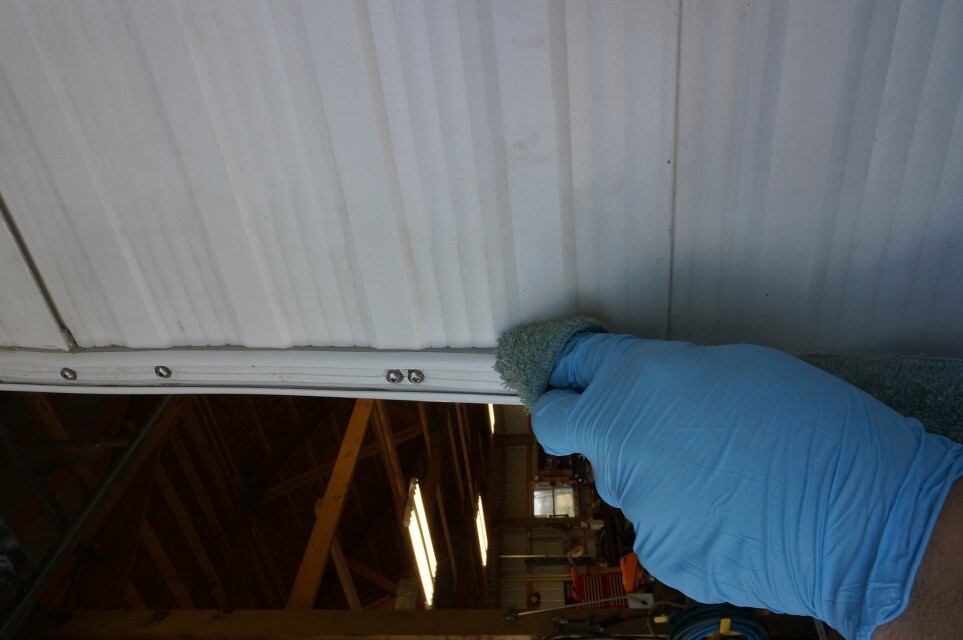
If you want close to a bullet proof seal, after a day or two if I used Naphtha, I go back with Proflex RV sealant over the top of the exposed butyl. It creates a 2nd seal and keeps any dirt from sticking to the butyl. There are tricks on how to tool out, smooth out Proflex too, it comes out really smooth and you can push it where you want it. Just do not apply in long lengths, 2 to 3 feet and they tool it out. You have to work quick as once it start to set, it will all glob up. Use a wet soapy finger you will not have any on your fingers. Do not apply in hot sun or sun hot siding, it dries too fast on you.
If you plan to keep your camper 5 to 20 years, use the butyl, it's worth it. If you are going to sell the camper in 3 years, well putty tape will get you through that much.
Hope this helps
John










